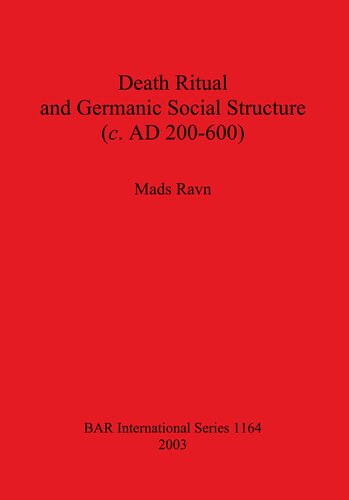

Most ebook files are in PDF format, so you can easily read them using various software such as Foxit Reader or directly on the Google Chrome browser.
Some ebook files are released by publishers in other formats such as .awz, .mobi, .epub, .fb2, etc. You may need to install specific software to read these formats on mobile/PC, such as Calibre.
Please read the tutorial at this link: https://ebookbell.com/faq
We offer FREE conversion to the popular formats you request; however, this may take some time. Therefore, right after payment, please email us, and we will try to provide the service as quickly as possible.
For some exceptional file formats or broken links (if any), please refrain from opening any disputes. Instead, email us first, and we will try to assist within a maximum of 6 hours.
EbookBell Team

4.8
94 reviewsThe aim of this book is to understand the development of the social structure of Germanic society in selected parts of "Germania Libera" in Europe from around c. 200 AD to 600 AD. Social structure here is primarily defined as the way the Germanic tribes perceived and expressed themselves and their worldview through their texts, their person, gender, family, lineage, tribe, and internal social and religious relations in the material culture. This book incorporates a relatively large time span which highlights aspects of Germanic social structure not identified in traditional shorter studies dictated by arbitrarily defined periods and areas. The focus is especially on the way Migration period cemeteries are differently or similarly structured within Germanic society. The Migration period is defined widely as the time from c. AD 200-600. In England, the equivalent time period is called late Roman and Early Saxon. When the cemeteries are analysed, other find categories are discussed in broader terms, together with analogies from social anthropology and from written sources, in this case, contemporary and later sources. One of the aims of the work is to look more closely at the singularity of the archaeological material in south-eastern Europe as a means of assessing the relevance of the written sources in the same area about social structure in both Southern and Northern Europe, especially in Scandinavia. (It also involves exploring the controversial source of Beowulf). The nine chapters focus on Germanic social structure; theoretical and methodological approaches to burials; south Scandinavian and Central European archaeology; social analysis of South Scandinavian cemeteries; a survey of the Sintana de Mures/Chernyakhovo culture; social analysis of Gothic cemeteries; survey of Anglo-Saxon scholarship; analysis of Anglo-Saxon graves, with special reference to Spong Hill; and conclusion.